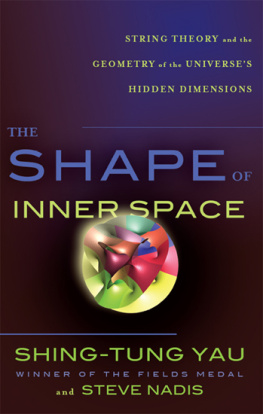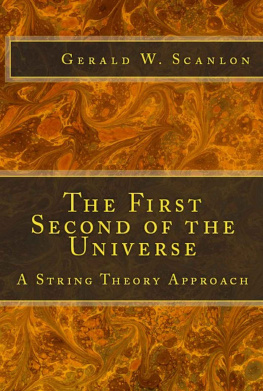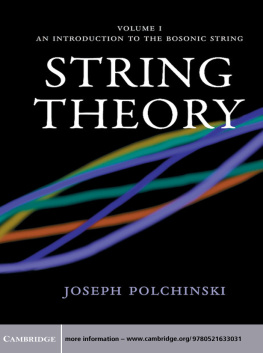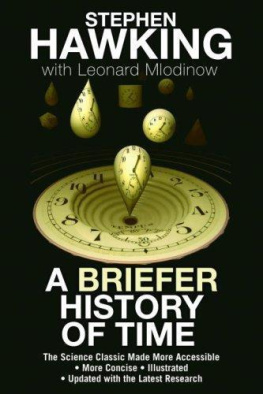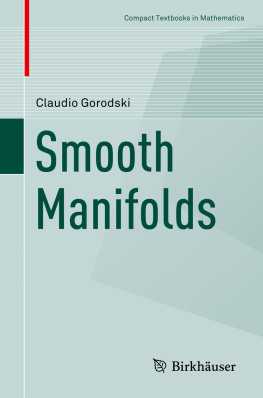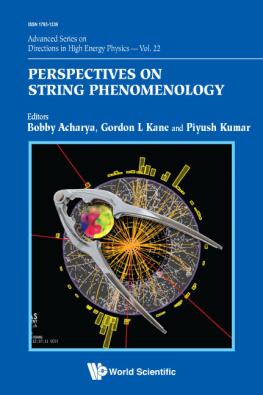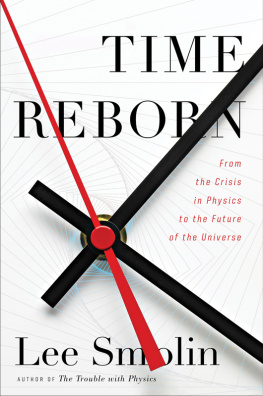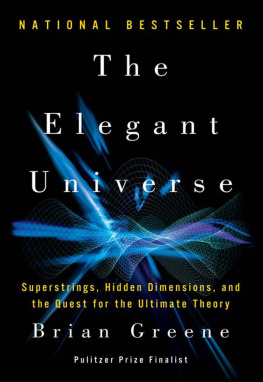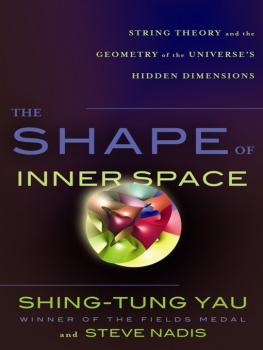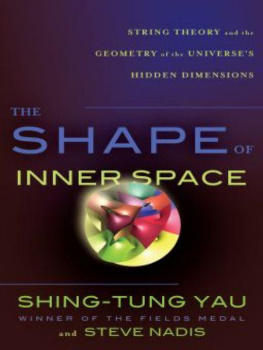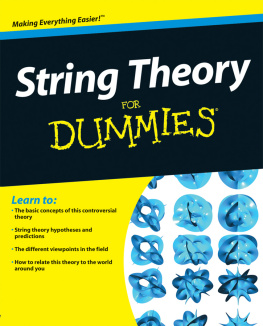THE
SHAPE
OF
INNER
SPACE

The
SHAPE
of
INNER
SPACE
STRING THEORY AND THE
GEOMETRY OF THE UNIVERSES
HIDDEN DIMENSIONS
Shing-Tung Yau
and
Steve Nadis
Illustrations by
Xianfeng (David) Gu and Xiaotian (Tim) Yin
BASIC BOOKS
A MEMBER OF THE PERSEUS BOOKS GROUP
New York
Copyright 2010 by Shing-Tung Yau and Steve Nadis
Published by Basic Books, A Member of the Perseus Books Group
All rights reserved. No part of this book may be reproduced in any manner whatsoever without written permission except in the case of brief quotations embodied in critical articles and reviews. For information, address Basic Books, 387 Park Avenue South, New York, NY 10016-8810.
Books published by Basic Books are available at special discounts for bulk purchases in the United States by corporations, institutions, and other organizations. For more information, please contact the Special Markets Department at the Perseus Books Group, 2300 Chestnut Street, Suite 200, Philadelphia, PA 19103, or call (800) 810-4145, ext. 5000, or e-mail .
Designed by Timm Bryson
Library of Congress Cataloging-in-Publication Data
Yau, Shing-Tung, 1949-
The shape of inner space: string theory and the geometry of the universes hidden dimensions / Shing-tung Yau and Steve Nadis; illustrations by Xianfeng (David) Gu and Xiaotian (Tim) Yin.
p. cm.
Includes bibliographical references and index.
ISBN 978-0-465-02023-2 (alk. paper)
1. Hyperspace. 2. String models. 3. Fourth dimension. I. Nadis, Steven J. II. Title.
QA691.Y38 2010
530.1dc22
2010009956
10 9 8 7 6 5 4 3 2 1
CONTENTS
Time, time
why does it vanish?
All manner of things
what infinite variety.
Three thousand rivers
all from one source.
Time, space
mind, matter, reciprocal.
Time, time
it never returns.
Space, space
how much can it hold?
In constant motion
always in flux.
Black holes lurking
mysteries afoot.
Space and time
one without bounds.
Infinite, infinite
the secrets of the universe.
Inexhaustible, lovely
in every detail.
Measure time, measure space
no one can do it.
Watched through a straw
whats to be learned has no end.
SHING-TUNG YAU
BEIJING, 2002
Mathematics is often called the language of science, or at least the language of the physical sciences, and that is certainly true: Our physical laws can only be stated precisely in terms of mathematical equations rather than through the written or spoken word. Yet regarding mathematics as merely a language doesnt do justice to the subject at all, as the word leaves the erroneous impression that, save for some minor tweaks here and there, the whole business has been pretty well sorted out.
In fact, nothing could be further from the truth. Although scholars have built a strong foundation over the course of hundredsand indeed thousandsof years, mathematics is still very much a thriving and dynamic enterprise. Rather than being a static body of knowledge (not to suggest that languages themselves are set in stone), mathematics is actually a dynamic, evolving science, with new insights and discoveries made every day rivaling those made in other branches of science, though mathematical discoveries dont capture the headlines in the same way that the discovery of a new elementary particle, a new planet, or a new cure for cancer does. In fact, save for the proof of a centuries-old problem from time to time, they rarely capture headlines at all.
Yet for those who appreciate the sheer force of mathematics, it can be viewed as not just a language but as the surest path to the truththe bedrock upon which the whole edifice of physical science rests. The strength of this discipline, again, lies not simply in its ability to explain physical reality or to reveal it, because to a mathematician, mathematics is reality. The geometric figures and spaces, whose existence we prove, are just as real to us as are the elementary particles of physics that make up all matter. But we consider mathematical structures even more fundamental than the particles of nature because mathematical structures can be used not only to understand such particles but also to understand the phenomena of everyday life, such as the contours of a human face or the symmetry of flowers. What excites geometers perhaps most of all is the power and beauty of the abstract principles that underlie the familiar forms and shapes of our contemporary world.
For me, the study of mathematics and my specialty, geometry, has truly been an adventure. I still recall the thrill I felt during my first year of graduate school, whenas a twenty-year-old fresh off the boat, so to speakI first learned about Einsteins theory of gravity. I was struck by the notion that gravity and curvature could be regarded as one and the same, as Id already become fascinated with curved surfaces during my undergraduate years in Hong Kong. Something about these shapes appealed to me on a visceral level. I dont know why, but I couldnt stop thinking about them. Hearing that curvature lay at the heart of Einsteins theory of general relativity gave me hope that someday, and in some way, I might be able to contribute to our understanding of the universe.
The Shape of Inner Space describes my explorations in the field of mathematics, focusing on one discovery in particular that has helped some scientists build models of the universe. No one can say for sure whether these models will ultimately prove correct. But the theory underlying these models, nevertheless, possesses a beauty that I find undeniable.
Taking on a book of this nature has been challenging, to say the least, for someone like me whos more comfortable with geometry and nonlinear differential equations than writing in the English language, which is not my native tongue. I find it frustrating because theres a great clarity, as well as a kind of elegance, in mathematical equations that is difficult, if not impossible, to express in words. Its a bit like trying to convey the majesty of Mount Everest or Niagara Falls without any pictures.
Fortunately, Ive gotten some well-needed help on this front. Although this narrative is told through my eyes and in my voice, my coauthor has been responsible for translating the abstract and abstruse mathematics into (hopefully) lucid prose.
When I proved the Calabi conjecturean effort that lies at the heart of this bookI dedicated the paper containing that proof to my late father, Chen Ying Chiu, an educator and philosopher who instilled in me a respect for the power of abstract thought. I dedicate this book to him and to my late mother, Leung Yeuk Lam, both of whom had a profound influence on my intellectual growth. In addition, I want to pay tribute to my wife, Yu-Yun, who has been so tolerant of my rather excessive (and perhaps obsessive) research and travel schedule, and to my sons, Isaac and Michael, of whom Im very proud.
I also dedicate this book to Eugenio Calabi, the author of the aforementioned conjecture, whom Ive known for nearly forty years. Calabi were an enormously original mathematician with whom Ive been linked for more than a quarter century through a class of geometric objects, Calabi-Yau manifolds, which serve as the principal subject of this book. The term
Next page
